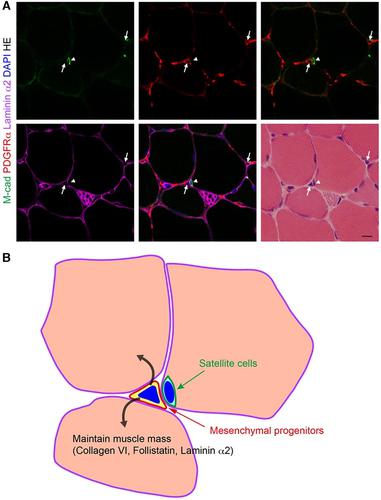当前位置:
X-MOL 学术
›
Ann. N. Y. Acad. Sci.
›
论文详情
Our official English website, www.x-mol.net, welcomes your feedback! (Note: you will need to create a separate account there.)
Rotator cuff tear degeneration and the role of fibro‐adipogenic progenitors
Annals of the New York Academy of Sciences ( IF 5.2 ) Pub Date : 2020-07-29 , DOI: 10.1111/nyas.14437 Obiajulu Agha 1, 2 , Agustin Diaz 1, 2 , Michael Davies 1, 2 , Hubert T Kim 1, 2 , Xuhui Liu 1, 2 , Brian T Feeley 1, 2
Annals of the New York Academy of Sciences ( IF 5.2 ) Pub Date : 2020-07-29 , DOI: 10.1111/nyas.14437 Obiajulu Agha 1, 2 , Agustin Diaz 1, 2 , Michael Davies 1, 2 , Hubert T Kim 1, 2 , Xuhui Liu 1, 2 , Brian T Feeley 1, 2
Affiliation

|
The high prevalence of rotator cuff tears poses challenges to individual patients and the healthcare system at large. This orthopedic injury is complicated further by high rates of retear after surgical repair. Outcomes following repair are highly dependent upon the quality of the injured rotator cuff muscles, and it is, therefore, crucial that the pathophysiology of rotator cuff degeneration continues to be explored. Fibro-adipogenic progenitors, a major population of resident muscle stem cells, have emerged as the main source of intramuscular fibrosis and fatty infiltration, both of which are key features of rotator cuff muscle degeneration. Improvements to rotator cuff repair outcomes will likely require addressing the muscle pathology produced by these cells. The aim of this review is to summarize the current rotator cuff degeneration assessment tools, the effects of poor muscle quality on patient outcomes, the role of fibro-adipogenic progenitors in mediating muscle pathology, and how these cells could be leveraged for potential therapeutics to augment current rotator cuff surgical and rehabilitative strategies.
中文翻译:

肩袖撕裂变性和纤维脂肪生成祖细胞的作用
肩袖撕裂的高发病率给个体患者和整个医疗保健系统带来了挑战。这种骨科损伤因手术修复后的高再撕裂率而进一步复杂化。修复后的结果在很大程度上取决于受伤肩袖肌肉的质量,因此,继续探索肩袖退化的病理生理学至关重要。纤维脂肪生成祖细胞是常驻肌肉干细胞的主要群体,已成为肌内纤维化和脂肪浸润的主要来源,这两者都是肩袖肌肉退化的关键特征。改善肩袖修复结果可能需要解决这些细胞产生的肌肉病理学问题。
更新日期:2020-07-29
中文翻译:

肩袖撕裂变性和纤维脂肪生成祖细胞的作用
肩袖撕裂的高发病率给个体患者和整个医疗保健系统带来了挑战。这种骨科损伤因手术修复后的高再撕裂率而进一步复杂化。修复后的结果在很大程度上取决于受伤肩袖肌肉的质量,因此,继续探索肩袖退化的病理生理学至关重要。纤维脂肪生成祖细胞是常驻肌肉干细胞的主要群体,已成为肌内纤维化和脂肪浸润的主要来源,这两者都是肩袖肌肉退化的关键特征。改善肩袖修复结果可能需要解决这些细胞产生的肌肉病理学问题。


























 京公网安备 11010802027423号
京公网安备 11010802027423号